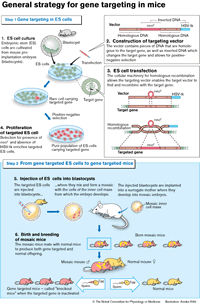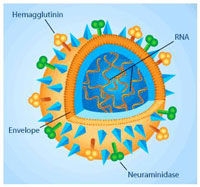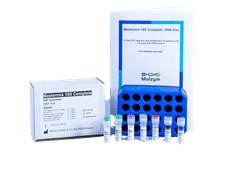BD Biosciences Announces First Winners of Expanded Research Grant Program
Advertisement
BD Biosciences, a segment of BD (Becton, Dickinson and Company), announced the first seven winners of its expanded BD Biosciences Research Grant Program who will receive research reagents valued at a total of $70,000 to conduct innovative cellular analysis research.
"Even in tough economic times, life science research must go on because it’s important to the health of our economy, and more importantly, the health of our society,” said Robert Balderas, Vice President of Biological Sciences, BD Biosciences. "BD Biosciences expanded the grant program for that very reason and hopes the winners’ research will increase our understanding of disease and lead to important biomedical breakthroughs."
An independent panel of distinguished scientists selected the winners. Each grant recipient will receive a $10,000 grant of research reagents to help carry out their research. The winners of the BD Biosciences Research Grant Program for this cycle are:
Jeffrey A. Gold, M.D., is Associate Professor of Medicine at the Oregon Health and Sciences University. Dr. Gold’s research focuses on sepsis. In septic patients, eosinophils, immune system cells that fight infection, are depleted while neutrophils are weakened. Dr. Gold will explore the hypothesis that interleukin-5 can rescue immune system components that are crucial for fighting sepsis. Dr. Gold’s abstract is titled, “Novel Role for IL-5 in Sepsis.”
Mary Cloud B. Ammons, Ph.D., is a research scientist in the Center for Biofilm Engineering at Montana State University. Dr. Ammons studies biofilm and the interactions between biofilms and the innate immune system, which consists of macrophages and neutrophils. The hope is that inducing macrophages to enter an anti-inflammatory vs. a pro-inflammatory phenotype will result in new treatments for biofilm-associated illness such as chronic infections and non-healing sores. Dr. Ammons’ abstract is titled, “Immunity to Bacterial Biofilm.”
Peter Antinozzi, Ph.D., is Assistant Professor in the Departments of Biochemistry and Internal Medicine, Wake Forest University School of Medicine. One of the challenges to analyzing biopsy samples is conducting “high content” screens from a small amount of very valuable tissue. Dr. Antinozzi, who is studying changes occurring in kidney cells in patients in diabetic nephropathy, uses automated confocal fluorescence microscopy to image all kidney cell types with a minimum of sample preparation. His work will directly benefit scientists who analyze human cells implicated in chronic diseases, and specifically could lead to diagnostic or prognostic tests for diabetic nephropathy. Dr. Antinozzi’s abstract is titled, “A Novel High-Content Assay for Renal Cell Biology.”
Melanie Dart, Ph.D., is an Assistant Scientist at the University of Wisconsin, Madison. Her work centers on immune system T-cell interactions with collagen V, a protein involved in the development and progression of atherosclerotic plaque. Dr. Dart will analyze blood and plaque samples from patients who have undergone vascular surgery to determine the correlation between plaque pathology and populations of two important classes of T-cells: regulatory T-cells, which suppress the inflammatory immune response, and effector T-cells, which induce it. The ultimate goal is therapies that suppress undesirable immune responses to atherosclerotic plaque. Dr. Dart’s abstract is titled, “Atherosclerosis and Collagen V.”
Nilufer Esen-Bilgin, M.D., is a Research Fellow at the University of Michigan. Her research interests lie in sindbis virus, an alphavirus that causes neuronal death in mice and serves as a model for human neurologic disease. Dr. Esen-Bilqin will attempt to unravel the immune response to sindbis infection, which is believed to result in neural damage. Knowing which specific macrophages and T-cells are infiltrating the nervous systems of infected animals will shed light on the pathology of sindbis-associated nerve damage, and it is hoped, analogous human diseases. Dr. Esen-Bilqin’s abstract is titled, “Infiltrating Myeloid Cells.”
Celine S. Lages, Ph.D. is a Postdoctoral Research Fellow at the Cincinnati Children's Hospital Medical Center. One consequence of aging is an attenuated immune response and the subsequent emergence of immune-associated disorders. Dr. Lages will study the impact of regulatory T-cells (Treg) on this process. Treg cells are super-regulators of the immune response: too high and immune competence decreases, while too little can result in autoimmunity. Understanding the conversion of “ordinary” T-cells to Treg in aging could lead to therapies that prevent that transformation, and thereby reduce the consequences of waning immunity. Dr. Lages’ abstract is titled, “Role of Peripheral Conversion in Regulatory T-Cell Accumulation in Aging.”
H. Scott Rapoport, Ph.D. is a Senior Scientist at Tengion, Inc., which researches the re-growth of organs and tissues using a combination of a patient’s own cells and a biocompatible material. The success of such implants, known as “constructs,” can depend on the activation states of macrophages. Initial work will focus on the point at which activation is initiated, and the contribution of the construct towards activation states leading to construct acceptance and rejection. This understanding should lead to rational design of constructs that induce favorable macrophage responses. Dr. Rapoport’s abstract is titled, “Macrophage Diversity.”
The expanded BD Biosciences Research Grant Program will award another seven scientists a total of $70,000 worth of research reagents in May 2010 to help cover year-round research needs. Grant applications should focus on research in one of seven core areas: stem cell, multicolor flow cytometry, cell signaling, cancer, immune function, infectious diseases and neurosciences.























































